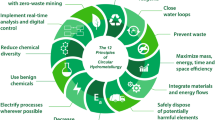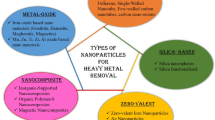Abstract
There is no controversy regarding the nature of charge carriers in in situ Nafion processes, but still there is controversy regarding charge carriers in ex situ processes. Using Hall voltage measurements, we have shown that valence electrons rather than protons are charge carriers in ex situ processes, contrary to widely accepted assumption that protons are charge carriers in Nafion regardless of a process. Concentration of valence electrons decreases with water uptake, but a graph of valence electron concentration, as a function of water content, is steeper than a graph of inverse volume. This brings us to conclusion that the total number of valence electrons decreases with water uptake. Concentration of valence electrons in ex situ measurements is four orders of magnitude higher than proton concentration in in situ measurements. In ex situ measurements on Nafion, metallic part of the electric circuit blocks proton propagation. On the other hand, in in situ measurements electrons are blocked in Nafion due to a potential barrier of dipole layer.









Similar content being viewed by others
References
Peckham TJ, Schmeisser J, Rodgers M, Holdcroft S (2007) Main-chain, statistically sulfonated proton exchange membranes: the relationships of acid concentration and proton mobility to water content and their effect upon proton conductivity. J Mater Chem 17:3255–3268. https://doi.org/10.1039/b702339a
Schalenbach M, Lueke W, Lehnert W, Stolten D (2016) The influence of water channel geometry and proton mobility on the conductivity of Nafion. Electrochim Acta 214:362–369. https://doi.org/10.1016/j.electacta.2016.08.010
Sone Y, Ekdinge P, Simonsson D (1996) Proton Conductivity of Nafion 117 as Measured by a Four-Electrode AC Impedance Method. J Electrochem Soc 143:1254–1259. https://doi.org/10.1149/1.1836625
Sumner JJ, Creager S, Ma JJ, DesMarteau DD (1998) Proton conductivity in Nafion 117 and in a novel bis[(perfluoroalkyl)sulfonyl]imide ionomer membrane. J Electrochem Soc 145:107–110. https://doi.org/10.1149/1.1838220
Casciola M, Albert G, Sganappa M, Narducci R (2006) On the decay of Nafion proton conductivity at high temperature and relative humidity. J Power Sources 162:141–145. https://doi.org/10.1016/j.jpowsour.2006.06.023
Cánovas MJ, Sobrados I, Sanz J, Acosta JL, Linares A (2006) Proton mobility in hydrated sulfonated polystyrene: NMR and impedance studies. J Membr Sci 280:461–469. https://doi.org/10.1016/j.memsci.2006.02.001
Blumenthal G, Cappadonia M, Lehmann M (1996) Investigation of the proton transport in Nafion membranes as a function of direction, temperature and relative humidity. Ionics 2:102–106. https://doi.org/10.1007/BF02375802
Yuan X, Wang H, Sun JC, Zhang J (2007) AC impedance technique in PEM fuel cell diagnosis—a review. Int J Hydrogen Energy 32:4365–4380. https://doi.org/10.1016/j.ijhydene.2007.05.036
Spry DB, Fayer MD (2009) Proton transfer and proton concentrations in protonated Nafion fuel cell membranes. J Phys Chem B 113:10210–10221. https://doi.org/10.1021/jp9036777
Zawodzinski TA, Derouin C, Radzinski S, Sherman RJ, Smith TV, Springer TE, Gottesfeld S (1993) Water uptake by and transport through Nafion 117 membranes. J Electrochem Soc 140:1041–1047. https://doi.org/10.1149/1.2056194
Springer TE, Zawodzinski TA, Wilson S, Gottesfeld SM (1996) Characterization of polymer electrolyte fuel cells using AC impedance spectroscopy. J Electrochem Soc 143:587–599. https://doi.org/10.1149/1.1836485
Li G, Pickup P (2003) Ionic conductivity of PEMFC electrodes. J Electrochem Soc 150:745–752. https://doi.org/10.1149/1.1611493
Tang Y, Zhang J, Song C, Liu H, Zhang J, Wang H (2006) Temperature dependent performance and in situ AC impedance of high-temperature PEM fuel cells using the Nafion-112 membrane. J Electrochem Soc 153:2036–2043. https://doi.org/10.1149/1.2337008
Brunetto C, Moschetto A, Tina G (2009) PEM fuel cell testing by electrochemical impedance spectroscopy. Electr Power Syst Res 79:17–26. https://doi.org/10.1016/j.epsr.2008.05.012
Yuan X, Sun JC, Wang H, Zhang J (2006) AC impedance diagnosis of a 500W PEM fuel cell stack: part II: individual cell impedance. J Power Sources 161:929–937. https://doi.org/10.1016/j.jpowsour.2006.05.003
Poljak I, Županović P, Barbir F (2018) Measurement of proton concentration in PEM by Hall effect. Fuel Cells 4:408–412. https://doi.org/10.1002/fuce.201700189
Hall E (1879) On a new action of the magnet on electric currents. Am J Math 2:287–292. https://doi.org/10.2307/2369245
Kittel C (2005) Introduction to solid-state physics, 8th edn. John Wiley & Sons, US, pp 153–156
Zawodzinski T, Springer TE, Davey J, Jestel R, Lopez C, Valerio J, Gottesfeld S (1993) A comparative study of water uptake by and transport through ionomeric fuel cell membranes. J Electrochem Soc 140:1981–1985. https://doi.org/10.1149/1.2220749
Liu J, Suraweera N, Keffer DJ, Cui S, Paddison SJ (2010) On the relationship between polymer electrolyte structure and hydrated morphology of perfluorosulfonic acid membranes. J Phys Chem C 114:11279–11292. https://doi.org/10.1021/jp911972e
Ozmaiana M, Naghdabadi R (2014) Modeling and simulation of the water gradient within a Nafion membrane. Phys Chem Chem Phys 16:3173–3186. https://doi.org/10.1039/C3CP54015D
Zawodzinski T, Neeman M, Sillerud L, Cottesfe S (1991) Determination of water diffusion coefficients in perfluorosulfonate ionomeric membranes. J Phys Chem 95:6040–6044. https://doi.org/10.1021/j100168a060
Morris D, Sun X (1993) Water-sorption and transport properties of Nafion 117 H. J Appl Polym Sci 50:1445–1452. https://doi.org/10.1002/app.1993.070500816
Yang C, Srinivasan S, Bocarsly A, Tulyani S, Benziger J A comparison of physical properties and fuel cell performance of Nafion and zirconium phosphate/Nafion composite membranes. J Membr Sci 237:145–161. https://doi.org/10.1016/j.memsci.2004.03.009
Matic H, Lundblad A, Lindberg G, Jacobsson P (2005) In situ micro-Raman on the membrane in a working PEM cell. Electrochem Solid-State Lett 8:A5–A7. https://doi.org/10.1149/1.1828272
Funding
Prof. Barbir acknowledges receiving funding from the project STIM-REI, European Observation Network for Territorial Development and Cohesion, Contract Number: KK.01.1.1.01.0003, a project funded by the European Union through the European Regional Development Fund—the Operational Programme Competitiveness and Cohesion 2014–2020 (KK.01.1.1.01).
Author information
Authors and Affiliations
Corresponding author
Ethics declarations
Conflict of interest
The authors declare no conflict of interest. The funders had no role in the design of the study; in the collection, analyses, or interpretation of data; in the writing of the manuscript; or in the decision to publish the results.
Additional information
Publisher's Note
Springer Nature remains neutral with regard to jurisdictional claims in published maps and institutional affiliations.
Rights and permissions
About this article
Cite this article
Poljak, I., Županović, P. & Barbir, F. Ex situ measurement of charge carrier concentration in Nafion by Hall effect. Polym. Bull. 79, 1713–1727 (2022). https://doi.org/10.1007/s00289-021-03551-x
Received:
Revised:
Accepted:
Published:
Issue Date:
DOI: https://doi.org/10.1007/s00289-021-03551-x




